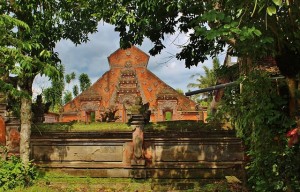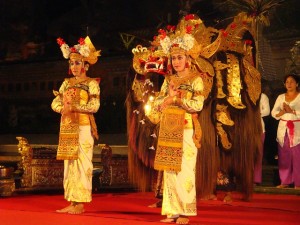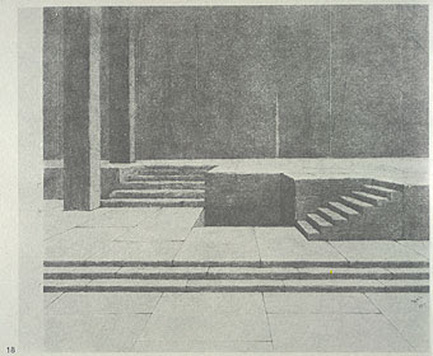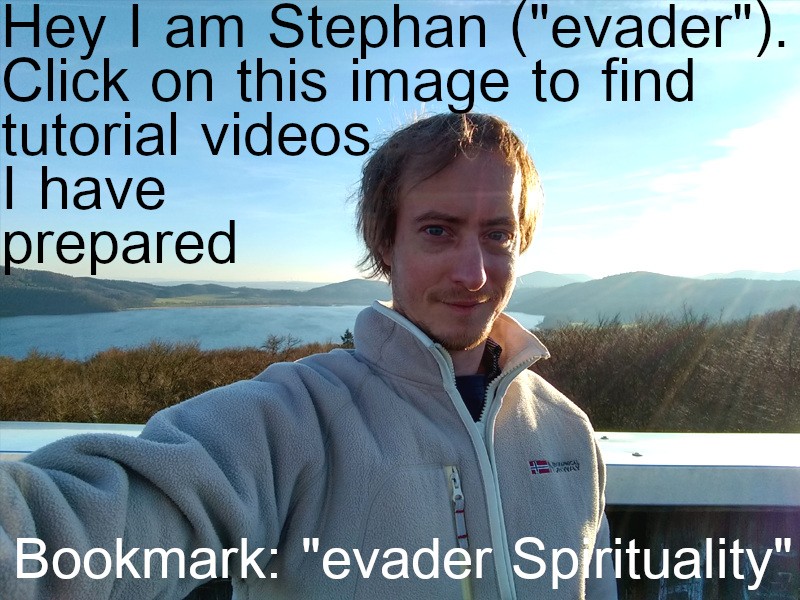Abstract theatre. Part three of the modern or postmodern Film, theater and movie theories
For understanding modern movies we will now with the following article look at something that happened in world theatre making about 70 years ago that became very important for modern films. If you read all 4 articles above starting with Film Theories you will have a much better understanding on modern films (so bookmark this page).
Bergsons philosophy and Gertrude Steins landscape plays
This is the third chapter about modern movie theories. We will learn some university stuff about modern or postmodern film and theater theories here. In the previous chapters we had a man called Bergson. And this Bergson in the beginning of the 20 century wrote philosophy in which he claimed that living itself is not understandable. He was not the first to say this, I am just picking one of the important names for this philosophical idea, but you have to think about many people in philosophy and in theatre theories in all epoches who say the same things. So you can live and this is the only way of “understanding” life and living. It is only livable but not describable. No word can give the same expression as the actual living that you do.  In 1938 a bit later Gertrude Stein an american woman and writer wrote a theatrical play called Dr. Faustus lights the lights. Again she is not the first or the last to write in this way I am just taking her as an example of many writers who did stuff like that. so again picture a group of people and this in different ages. Nobody comes up with an idea all alone in philosophy or theatre theories because all ideas derive from the art that is done and many people make art so theory is always done by many people parallel. So Gertrude Stein wrote a play in 1938 called Dr. Faustus lights the lights. She uses the old folk tale of Dr. Faustus a man who compacts with the devil to become a higher person. You probably know this story from playwright Marlowe or from playwright Göthe (Goethe). And in Steins play there is something missing, something that we would consider important in a theatrical play. This particular play has no story. There are characters and they say things that are around certain topics. Around Faustus inventing the elecric light and around the devil who wants to claim the soul of Faustus. But there is no collison of wishes between these two people that gets resolved. The story has no resolution and so the characters speak empty things. They speak and speak but it all has nothing to do with story. So they do not speak to each other convincing the other person to do something that in the end is done or not. Nothing actually happens in terms of a change of events. The people are in the beginning the same as they are at the end of the play. So when they talk you have the impression of stupid babble that is always topical circling around the invention of the light for example but the more you read the more you understand that the things that they say do in no case develope in terms of oppositional clash between the characters. There is no buildup of dramatic opposing action that is decided at the end. It is just seemingly continous “word-nonsense” that is bound by a topic. Lets hear an example:
In 1938 a bit later Gertrude Stein an american woman and writer wrote a theatrical play called Dr. Faustus lights the lights. Again she is not the first or the last to write in this way I am just taking her as an example of many writers who did stuff like that. so again picture a group of people and this in different ages. Nobody comes up with an idea all alone in philosophy or theatre theories because all ideas derive from the art that is done and many people make art so theory is always done by many people parallel. So Gertrude Stein wrote a play in 1938 called Dr. Faustus lights the lights. She uses the old folk tale of Dr. Faustus a man who compacts with the devil to become a higher person. You probably know this story from playwright Marlowe or from playwright Göthe (Goethe). And in Steins play there is something missing, something that we would consider important in a theatrical play. This particular play has no story. There are characters and they say things that are around certain topics. Around Faustus inventing the elecric light and around the devil who wants to claim the soul of Faustus. But there is no collison of wishes between these two people that gets resolved. The story has no resolution and so the characters speak empty things. They speak and speak but it all has nothing to do with story. So they do not speak to each other convincing the other person to do something that in the end is done or not. Nothing actually happens in terms of a change of events. The people are in the beginning the same as they are at the end of the play. So when they talk you have the impression of stupid babble that is always topical circling around the invention of the light for example but the more you read the more you understand that the things that they say do in no case develope in terms of oppositional clash between the characters. There is no buildup of dramatic opposing action that is decided at the end. It is just seemingly continous “word-nonsense” that is bound by a topic. Lets hear an example:
You fool you devil how can you know, how can you tell me so, if I am the only one who can know what I know then no devil can know what I know and no devil can tell me so. And I could know without any soul to sell, without there being anything in hell. What I know I know, I know how I do what I do when I see the way through. And always any day I will see another day and you old devil you know very well you never see any other way then just the way to hell, you only know one way, You only know one thing you are never ready for anything, and I everything is always new and now and now perhaps through you I begin to know that it is all just so, that light however bright will never be other than light, and any light is just a light and now there is nothing more either by day or by night but just a light.
I link to a read online source of the complete text below (there are just some pages missing for copyright issues I guess, but there is nearly the complete piece or play). We notice that this text is in rhymes sometimes and repeats some words excessivly. So this text has a certain asthetical aspect that comes from the language itself. It is poem-like in a way. It builds up rhythm with the word used.
 Now this excerpt from the text makes us think that there would be a story. This Faustus is obviously insulting the devil and we prepare to sit back and watch the fight between those two on stage. But that does not happen, Faust keeps babbling such word and then the devil eventually starts to babble some words. Always somehow on the topic but the more they babbel the more you notice that their talk is absolutely not leading anywhere. They are in no case planning to fight somehow. They just stand on the stage and babble. Thats why we feel that there is no story at all. In the end a little bit of a seeming story appears when a girl that was also on stage seems to reject Fausts proposal to engage. But this is all not spoken it is an impression that you get just from that, that Faust talks often about the girl Marguerite and when he talks to her at the end he babbles some words and she babbles some word which seem to be rather rejecting and cold.
Now this excerpt from the text makes us think that there would be a story. This Faustus is obviously insulting the devil and we prepare to sit back and watch the fight between those two on stage. But that does not happen, Faust keeps babbling such word and then the devil eventually starts to babble some words. Always somehow on the topic but the more they babbel the more you notice that their talk is absolutely not leading anywhere. They are in no case planning to fight somehow. They just stand on the stage and babble. Thats why we feel that there is no story at all. In the end a little bit of a seeming story appears when a girl that was also on stage seems to reject Fausts proposal to engage. But this is all not spoken it is an impression that you get just from that, that Faust talks often about the girl Marguerite and when he talks to her at the end he babbles some words and she babbles some word which seem to be rather rejecting and cold.
“Look well I am Dr. Faustus and I can go to hell. Marguerite Ida and Helena Anabell(this girl has two names).”
“You Doctor Faustus never never Doctor Faustus is old I was told and I saw it with my eyes…”
 This is the highest point of this seeming lovestory. So it is not so that there is no story at all. But all parts of a possible story have to be taken from hints like the devil is seemingly disapointed at the end. So that allover you can finally definitely say this is not about the story.The text is topical circling around events and it always seems like there could be a story to all this. But a real story does not at all appear. Events never clash and get resolved. it all stays static. The characters don’t change they just deliver topical speaches over and over until the book is just over.
This is the highest point of this seeming lovestory. So it is not so that there is no story at all. But all parts of a possible story have to be taken from hints like the devil is seemingly disapointed at the end. So that allover you can finally definitely say this is not about the story.The text is topical circling around events and it always seems like there could be a story to all this. But a real story does not at all appear. Events never clash and get resolved. it all stays static. The characters don’t change they just deliver topical speaches over and over until the book is just over.
Why does Gertrude Stein do this? She herself called this idea of theatre a “landscape”. There is no development, you watch it like a landscape it stays the same and yet you can watch it for some time. Things are happening but not developing. Because Stein said developing things demand focus and attention and that is not relaxing anymore. So in normal terms talking without saying anything is stupid babbling, but in this case where the babbling is intentionally not leading anywhere it is an artistic use of “speaking” itself. A lot of speaking is happening on the stage but it does never lead anywhere.
Now we come back to Bergson again. You can live and feel that you are livng but you can not explain it. because living is more than words can express. That basic idea drives Gertrude Steins idea of theater. You can watch it and feel it but you can not explain it by summarizing the story. It is something that is just there. Just like living. So what Gertrude Steins theater is “saying” is not in the logic of who wins this story. It is in the actual being there of the “act of speaking”. If you put it to a stage it becomes of course the being there of the characters, who are also themselves as actors and the speaking they do as language sound and as the words and the feelings that both these things evoke all the time while they are spoken, that is what is delivered to the audience. One theoretican once called such idea of theater a speach delivered to the audience made of all possibilities you have, like pronunciation, feelings that words convey, people doing gestures, that in this case do not mean something in relation to a story but rather mean what they mean if you just feel them or just understand there meaning apart from any story or inside a little story-like fragment.
You can live and feel that you are livng but you can not explain it. because living is more than words can express. That basic idea drives Gertrude Steins idea of theater. You can watch it and feel it but you can not explain it by summarizing the story. It is something that is just there. Just like living. So what Gertrude Steins theater is “saying” is not in the logic of who wins this story. It is in the actual being there of the “act of speaking”. If you put it to a stage it becomes of course the being there of the characters, who are also themselves as actors and the speaking they do as language sound and as the words and the feelings that both these things evoke all the time while they are spoken, that is what is delivered to the audience. One theoretican once called such idea of theater a speach delivered to the audience made of all possibilities you have, like pronunciation, feelings that words convey, people doing gestures, that in this case do not mean something in relation to a story but rather mean what they mean if you just feel them or just understand there meaning apart from any story or inside a little story-like fragment. There is talking without taking care of the logic of events or without taking care of usual talk with meaning There is never a connection to a developing story, just the spoken and done things themselves like a completely made up speach from the director who is knowing that the audience knows about this kind of playful use of all the possibilities. So you have plainly the spoken things and other things as what they just are by themselves. And the idea why this is done is because we anyways are in a world of which we seem not understand the full logic. So people here are trying to make a play or a staging that still is fun even though the audince knows very much of story lines and what theater is and has to be, and for creating a fun thing for people who already know thousands of stories and can anyways predict what will happen and are anyways bored by every story you would tell them the author Gertrude Stein is using the happening things of the play more freely actually completely without a story to give some more fun to the play. Because they figure that humans have this exessive drive to play and might want to expand this playing onto the field of the “live being of things” as they are in this case speaking and words themselve that are not forced into some kind of story. And the possibly fun moments that the events and words on stage can bring for a human being which is trying to go constantly above its own logic. And so all these theater things are at first sight wiithout logic because they are without the usual logic of how story lines fit together. It is just the words to enjoy. Because they are thought of as bringing some fun for a viewer who already knows all conventions of story development and stuff like for example: how it feels to watch a hero win. So the things like speaking and moving are shown as what they are and the story is used in that casual way that it can be there but must not have logic. With this kind of theater people want to somehow get close to really speaking to people who understand life rather as living then as formulas and words. So sometimes things are done just for the fun of it. And sometimes it is just for the feeling of it, and sometimes it is then also just for the logic of it.
There is talking without taking care of the logic of events or without taking care of usual talk with meaning There is never a connection to a developing story, just the spoken and done things themselves like a completely made up speach from the director who is knowing that the audience knows about this kind of playful use of all the possibilities. So you have plainly the spoken things and other things as what they just are by themselves. And the idea why this is done is because we anyways are in a world of which we seem not understand the full logic. So people here are trying to make a play or a staging that still is fun even though the audince knows very much of story lines and what theater is and has to be, and for creating a fun thing for people who already know thousands of stories and can anyways predict what will happen and are anyways bored by every story you would tell them the author Gertrude Stein is using the happening things of the play more freely actually completely without a story to give some more fun to the play. Because they figure that humans have this exessive drive to play and might want to expand this playing onto the field of the “live being of things” as they are in this case speaking and words themselve that are not forced into some kind of story. And the possibly fun moments that the events and words on stage can bring for a human being which is trying to go constantly above its own logic. And so all these theater things are at first sight wiithout logic because they are without the usual logic of how story lines fit together. It is just the words to enjoy. Because they are thought of as bringing some fun for a viewer who already knows all conventions of story development and stuff like for example: how it feels to watch a hero win. So the things like speaking and moving are shown as what they are and the story is used in that casual way that it can be there but must not have logic. With this kind of theater people want to somehow get close to really speaking to people who understand life rather as living then as formulas and words. So sometimes things are done just for the fun of it. And sometimes it is just for the feeling of it, and sometimes it is then also just for the logic of it. Somehow just like speaking to an audience freely using all means and also speaking to an audience who knows very much about the feelings that evolve while watching a movie or theater and how these effects are done. So it is like talking to or moving people who know very much and that with fun things or things that work with story effects or things that work with the way you use the way you speak and how you do things playfully. Just like speaking to people who already know stuff and still want to be entertained. And speaking to an audience who thinks at the moment about “living is just what it is and can not be summarized”. So watching the play is tried to be made to be something that can not be summarized and it is just about watching the people speaking and doing things for the duration of the play with the feelings and knowings and reactions this creates in the viewer. Trying to get from the things that you do on stage an over all better audience reaction in terms of what usually effects like seing a hero win did for the audience. Something more fun for the knowing audience member. Something that chooses to mean nothing. So it can be freely enjoyed. Maybe at this point you want to read the exerpt of that play given above once more to now freely enjoy the things that mean nothing. And to understand how this feels. Before we come to Antonine Artaud.
Somehow just like speaking to an audience freely using all means and also speaking to an audience who knows very much about the feelings that evolve while watching a movie or theater and how these effects are done. So it is like talking to or moving people who know very much and that with fun things or things that work with story effects or things that work with the way you use the way you speak and how you do things playfully. Just like speaking to people who already know stuff and still want to be entertained. And speaking to an audience who thinks at the moment about “living is just what it is and can not be summarized”. So watching the play is tried to be made to be something that can not be summarized and it is just about watching the people speaking and doing things for the duration of the play with the feelings and knowings and reactions this creates in the viewer. Trying to get from the things that you do on stage an over all better audience reaction in terms of what usually effects like seing a hero win did for the audience. Something more fun for the knowing audience member. Something that chooses to mean nothing. So it can be freely enjoyed. Maybe at this point you want to read the exerpt of that play given above once more to now freely enjoy the things that mean nothing. And to understand how this feels. Before we come to Antonine Artaud.
Antonin Artauds theater theories and the painting Lots Daughters.
in the same year as this Dr. Faustus version from Gertrude Stein was written a man called Antonin Artaud wrote a book about theatre theories. It is even today very much read among theatrical theorists. In the beginning of this book Artaud talks about this oil pianting of Lucas van Leyden called Lot and his daughters.
Artaud states that this image is not about story. But let me explain firt just for short and that we know it, what would be the story. of this image:The figure of Lot is in Christianity and in Islam one of the good guys. Even though he had sex with his daugters(he was somehow forced to do this). He was so good that God (Allah, Ishvara, Dao, Jehova) let him get away before God destroyed the cities of Sodom and Gomorrah with fire from the skies in this old myth like religious story. So that is basicly what we see on this image.
But Antonin Artaud states that this is not at all what we see in the image. He talks about a strange power that comes from the image. From the colour and how it is painted and also what is shown. He says the actual speaking of that image comes from the image itself and not from what is depicted. It is also in this wave of philosophical theories we cited Bergson for. You can feel it but it can not to be summarized. Artaud speaks of a mystical experience and that all that can not be explained to well. Lets hear Artaud about this cited from his very famous book “Theatre and its double”:
it affects the mind with an almost thunderous visual harmony, intensely active throughout the painting, yet to be gathered from a single glance[...]. A drama of high intellectual importance seems massed there like a sudden gathering of clouds. [...] the peculiar lighting of the canvas, the jumble of shapes, the impression the whole gives at a distance – everything betokens a kind of drama of nature for which I defy any painter of the Great Periods to give us an equivalent. A tent is pitched at the sea’s edge, in front of which Lot is sitting [...] watching his daughters parade up and down as if he were a guest at a prostitutes’ banquet.
[...] We are thus presented with the profoundly incestuous character of the old theme which the painter develops here in passionate images.
On the left of the picture, and a little to the rear, a black tower rises to prodigious heights [which only at its end at the] bridge, [...] at last receives a ray of that stormy light which brims over between the clouds and showers the region irregularly.
The sea in the background of the canvas is extremely high, at the same time extremely calm considering the fiery skein that is boiling up in one corner of the sky. [...]
[There is a] submission of the different elements of landscape to the fire revealed in the sky [just in the way fireworks light the surrounding area] even though they possess their own light, they remain in spite of everything related to this sudden fire as dim echoes, living points of reference born from it and placed where they are to permit it to exercise its full destructive force.
There is moreover something frighteningly energetic and troubling in the way the painter depicts this fire, like an element still active and in motion, yet with an immobilized expression. It matters little how this effect is obtained, it is real; it is enough to see the canvas to be convinced of it.
In any case, this fire, which no one will deny produces an impression of intelligence and malice, serves, by its very violence, as a counterbalance in the mind to the heavy material stability of the rest of the painting. [...]
[And we see ] Vessels cut in two [..].
It would be difficult to say why the impression of [naval] disaster, which is created by the sight of only one or two ships in pieces, is so complete.
It seems as if the painter possessed certain secrets of linear harmony, certain means of making that harmony affect the brain directly, like a physical agent. In any case this impression of intelligence prevailing in external nature and especially in the manner of its representation is apparent in several other details of the canvas, witness for example the bridge as high as an eight-story house standing out against the sea, across which people are filing, one after another, like Ideas in Plato’s cave.
It would be untrue to claim that the ideas which emerge from this picture are clear. They are however of a [very big] grandeur. [...]
In addition, Lot and his daughters suggest an idea concerning sexuality and reproduction, for Lot is seemingly placed there among his daughters to profit unfairly by them, like a drone.
It is almost the only social idea that the painting contains.
All the other ideas are metaphysical. I am sorry to use this word, but it is their name; and I shall even say that their poetic grandeur, their concrete efficacity upon us, is a result of their being metaphysical; their spiritual profundity is in separable from the formal and exterior harmony of the picture.
There is, again, an idea of Becoming which the various details of the landscape and the way they are painted – the way their planes and perspectives are blotted out or made to correspond – introduce into our minds with precisely the effect of a piece of music.
There is another idea, of Fatality, expressed less by the sudden apparition of this fire, than by the solemn way in which all the forms are organized or disorganized beneath it, some as if bent under a wind of irresistible panic, others immobile and almost ironic, all obeying a powerful intellectual harmony, which seems to be the exteriorization of the very spirit of nature.
And there is an idea of Chaos, an idea of the Marvelous, an idea of Equilibrium; there are even one or two concerning the impotence of Speech whose uselessness this supremely material and anarchic painting seems to demonstrate. I say in any case that this painting is what the theater should be, if it knew how to speak the language that belongs to it.
So  Artaud sees something metaphysical(godly) in this image. like as if you would see the working of the nature spirit becaue the godly fire seems to hit the earth and the earth seems to be accepting this also because of God. A perfect harmony even though it is a big destruction. And he compares the correspondances in the image as having the same way of creating effects as music has in its correspondances. And he speaks of that the painter through the use of linear harmony is seemingly affecting the brain directly like a physical agent. And again he speaks of the impression of intelligence prevailing in external nature.
Artaud sees something metaphysical(godly) in this image. like as if you would see the working of the nature spirit becaue the godly fire seems to hit the earth and the earth seems to be accepting this also because of God. A perfect harmony even though it is a big destruction. And he compares the correspondances in the image as having the same way of creating effects as music has in its correspondances. And he speaks of that the painter through the use of linear harmony is seemingly affecting the brain directly like a physical agent. And again he speaks of the impression of intelligence prevailing in external nature.
And here we go back to Bergson once more, Things are what they are, and we note that this description of nature has something to do with Bergsons philosophical approach.
Antonin Artaud and the balinese theater
From this idea of the metaphysical(spiritual) painting Antonine Artaud comes to the traditional theater of Bali which he absolutely likes as a good model for theater as he thinks it should be. In balinese theater all movements are rehearsed before the play so they are like dances structured completely before they go on stage. Still what happens on the stage tells a story, stuff like a hero fights a demon and wins. And all this choreographed movements are accompanied with music all the time.
 Ok we start with balinese theater that is not really the balinese theater Artaud has in mind. We will talk about this kind of balinese theater later. We will first look at a moderate version of balinese theater (6 minutes). But with this more moderate balinese theater you can first of understand the idea of “speaking” with other things than language. But the balinese theater described later in this chapter is very different. So when you read the rest of this chapter remember that it talks about a more heavy form of balinese theater that we will watch at the end of this chapter. When you now watch this 6 minute excerpt of “the light version” of traditional Bali theater think about how the connection of the prepared movements in these clothes combined with music “speak” even though the do not speak with words. How this speaking is in Bersons thinking something that you can understand like you understand living but can not be described. Note how the movements and costumes are related to what Artaud said about the direct effect of the painting.
Ok we start with balinese theater that is not really the balinese theater Artaud has in mind. We will talk about this kind of balinese theater later. We will first look at a moderate version of balinese theater (6 minutes). But with this more moderate balinese theater you can first of understand the idea of “speaking” with other things than language. But the balinese theater described later in this chapter is very different. So when you read the rest of this chapter remember that it talks about a more heavy form of balinese theater that we will watch at the end of this chapter. When you now watch this 6 minute excerpt of “the light version” of traditional Bali theater think about how the connection of the prepared movements in these clothes combined with music “speak” even though the do not speak with words. How this speaking is in Bersons thinking something that you can understand like you understand living but can not be described. Note how the movements and costumes are related to what Artaud said about the direct effect of the painting. And note how Gertrude Steins “speaking” without story-sense is related to the speaking of the costumes and the movements. Like the image effects of the oil painting they are there and they move you but they do not have a word-meaning. Apart from all this speaking without story balinese theater does actually also tell a story, there is always a background story like in normal european theater. but it is not so much visible because the movements, music and costumes are more visible. So note how a way of “speaking” in dance and movement and costumes can be seen here that is painting-like and not like usual word meaning in theater.
And note how Gertrude Steins “speaking” without story-sense is related to the speaking of the costumes and the movements. Like the image effects of the oil painting they are there and they move you but they do not have a word-meaning. Apart from all this speaking without story balinese theater does actually also tell a story, there is always a background story like in normal european theater. but it is not so much visible because the movements, music and costumes are more visible. So note how a way of “speaking” in dance and movement and costumes can be seen here that is painting-like and not like usual word meaning in theater.
Artaud was impressed. And he looked at the theater of his times where people where standing on the stage just talking and in the end there was a conclusion of all this talk. And so he saw balinese theater and said this is actually theater. A form of art that includes movement and music and costume and stagebuilding which goes over what you can describe with words. It can be seen and enjoyed and it has an effect on you but it can not be summarized with words. You have to see it and that makes the effect, if somebody would tell you the underlying store this would not be the same. So he said the actual theater is what happens on the stage and not the story. And he says that for this effect it is important that the sounds accompany the movements and are not just decorations but are running along with the movements.
 And he talks about that seemingly all the events in the play are directly triggerd by an overarching nature spirit that seems to move all the things together that happen on the stage. And he points out in his theater theory that the movements in Balinese theater do not signify anything . They are not like a pantomime where anithing can be described with words, they are movements that do not signify words. So they are bigger then story or at least as big. He calls this “poetry in space independent of spoken language”. And so he wants to point out that theater is something different then just the staged story. And he says:
And he talks about that seemingly all the events in the play are directly triggerd by an overarching nature spirit that seems to move all the things together that happen on the stage. And he points out in his theater theory that the movements in Balinese theater do not signify anything . They are not like a pantomime where anithing can be described with words, they are movements that do not signify words. So they are bigger then story or at least as big. He calls this “poetry in space independent of spoken language”. And so he wants to point out that theater is something different then just the staged story. And he says:
[...] this language of gesture and mime, this wordless pantomime, these postures, attitudes, objective intonations, in brief everything I consider specifically theatrical in the theater, all these elements when they exist apart from text are generally considered the minor part of theater; they are negligently referred to as “craft,” and identified with what is understood by staging or “production,” [...].
And he also draws a connection between the dragon outfits on the Balinese stage and he says that they are:
[...] capable of reintroducing on the stage a little breath of that great metaphysical fear which is at the root of .all ancient theater.
 And as I said the whole thing consisting of movement, costume and sound that seem to run like a constant inspired stream gave Artaud the impression of a feeling of a spirit ruling this theater and all its movements all the time. And that western culture would have forgotten about this depiction of overall spirit. So he speaks about an ” [...] Oriental theater of metaphysical tendencies, as opposed to the Occidental theater of psychological tendencies. And after deifining this theater as an image of a big metaphysical(here: spirit driven) thing in action he goes even further and says that if the audience watches this then there reaction to it is so profound and basic human that this reaction is also a feeling of spirit or metaphysical being. So he says that the audience also feels metaphysical(touched by God or Allah or in this case better: the spirit) when they see it. In Artauds words:
And as I said the whole thing consisting of movement, costume and sound that seem to run like a constant inspired stream gave Artaud the impression of a feeling of a spirit ruling this theater and all its movements all the time. And that western culture would have forgotten about this depiction of overall spirit. So he speaks about an ” [...] Oriental theater of metaphysical tendencies, as opposed to the Occidental theater of psychological tendencies. And after deifining this theater as an image of a big metaphysical(here: spirit driven) thing in action he goes even further and says that if the audience watches this then there reaction to it is so profound and basic human that this reaction is also a feeling of spirit or metaphysical being. So he says that the audience also feels metaphysical(touched by God or Allah or in this case better: the spirit) when they see it. In Artauds words:
[...] this whole complex of gestures, signs, postures, and sonorities which constitute the language of stage performance, this language which develops all its physical and poetic effects on every level of consciousness and in all the senses, necessarily induces thought to adopt profound attitudes which could be called metaphysics-in-action.
And then finally Artaud goes on in this theory what we can now make of the theater:
To derive, then, the [...] [best] poetic results from the means of realization is to make metaphysics of them, and I think no one will object to this way of considering the question. And to make metaphysics out of language, gestures, attitudes, sets, and music from a theatrical point of view is, it seems to me, to consider them in relation to all the ways they can have of making contact with time and with movement.
To make metaphysics out of a spoken language [for example] is to make the language express what it does not ordinarily express: to make use of it in anew, exceptional, and unaccustomed fashion; to reveal its possibilities for producing physical shock; to divide and distribute it actively in space; to deal with intonations in an absolutely concrete manner, restoring their power to shatter as well as really to manifest something; to turn against language and its basely utilitarian, one could say alimentary, sources, against its trapped-beast origins; and finally, to consider language as the form of Incantation.
Everything in this active poetic mode of envisaging expression on the stage leads us to abandon the modem humanistic and psychological meaning of the theater, in order to recover the religious and mystic preference of which our theater has completely lost the sense. [...]
Perhaps it means that at the point where we are we have lost all touch with the true theater, since we confine it to the domain of what daily thought can reach, the familiar or unfamiliar domain of consciousness; and if we address ourselves theatrically to the unconscious [...]. [...]
Let it be further said that one of the reasons for the physical efficacity upon the mind, for the force of the direct images of action in certain productions of the Oriental theater, such as those of the Balinese theater, is that this theater is based upon age-old traditions which have preserved intact the secrets of using gestures, intonations, and harmonies in relation to the senses and on all possible levels [...].
[So through] these rustlings of branches, these sounds of hollow drums, these robot squeakings, these dances of animated manikins, is [..] [it]: that through the labyrinth of their gestures, attitudes, and sudden cries, through the gyrations and turns which leave no portion of the stage space un utilized, the sense of. anew physical. language, based upon signs and no longer upon words, is liberated.
[The Balinese people] reinstate the superior worth of theatrical conventions, demonstrate. the forcefulness and greater emotional value of a certain number of perfectly learned and above all masterfully applied conventions.
And now we look at this old balinese theater. Now you will see a very iritating version of this metaphysical fear produced on stage. And you will see some of the completely choreographed movements and the way the music produces a feeling of metaphysiciality and goes along with the movements. It is gonna be tough but it is for learning purposos, this does not at all mean that our own productions of art have to be this scary. We are just understanding mechanisms of theatrical language. Traditional Balinese theater is a mixture of this stuff and dancing of women as we saw it before. but now we will only see the beast scene. Imagin in an original Balinese theater always also other scenes with woman dancers and yet other scenes with people with masks running quite franticly through and fro the stage.
Now you will see a very iritating version of this metaphysical fear produced on stage. And you will see some of the completely choreographed movements and the way the music produces a feeling of metaphysiciality and goes along with the movements. It is gonna be tough but it is for learning purposos, this does not at all mean that our own productions of art have to be this scary. We are just understanding mechanisms of theatrical language. Traditional Balinese theater is a mixture of this stuff and dancing of women as we saw it before. but now we will only see the beast scene. Imagin in an original Balinese theater always also other scenes with woman dancers and yet other scenes with people with masks running quite franticly through and fro the stage.
Disturbing but more original balinese theater.
Modern theater. Robert Wilsons theater
Now what have people made of all this on modern stages. There is one man who is most famous for taking all this knowledge and making modern theater with it. This man is Robert Wilson.
 So no without much further ado we will just look at a modern Wilson theater. Unfortunatly this is not the best Wilson performance. Which should be Wilsons own staging of Dr Faustus lights the lights. Yeah right this theater play wit no story we had in the beginning. This Wilson theater you have to imagin as much more modern, more clinical, just pure coloured light screens and more modern dresses and ironic speaking of the words. Like futuristic theater people walking in front of colour screens and saying just stuff and suddenly walking in slow motion. And choreographed partner movement saying things in rapidly changing moods from crying to speaking very proud and stuff. So in the best Wilson theater imagine a modern looking “light and people speaking show” that is ritualistic and triggering emotions but you have absolutely now idea what this is all should be pointing to.
So no without much further ado we will just look at a modern Wilson theater. Unfortunatly this is not the best Wilson performance. Which should be Wilsons own staging of Dr Faustus lights the lights. Yeah right this theater play wit no story we had in the beginning. This Wilson theater you have to imagin as much more modern, more clinical, just pure coloured light screens and more modern dresses and ironic speaking of the words. Like futuristic theater people walking in front of colour screens and saying just stuff and suddenly walking in slow motion. And choreographed partner movement saying things in rapidly changing moods from crying to speaking very proud and stuff. So in the best Wilson theater imagine a modern looking “light and people speaking show” that is ritualistic and triggering emotions but you have absolutely now idea what this is all should be pointing to.
But for now we will watch this clip. Whis is also quite classic Wilson theater. Now in this performance note how the text which is not a play but a german version of shakespear sonnets(Wilson is an American but he has done this staging in germany) is spoken as only one little aspect of the whole performance. And the bigger part of the performance is make up of the completely choreographed movements of the actors across the stage and their costumes and their also choreographed mimic. You have to understand that Wilson freely combines modern things like for example just knowing what shakespear looked like and uses such stuff as images for the performance so the whole thing becomes quite wild. Whalt looks like an ancient medieval stuff is actually carefully combined by Wilson from a modern view. And so Wilson tries here to combine what Artauds and others described as direct theater. And he also employs the idea of an overall spirit making all the movements in this theatrical performance. And he also does the frightening overall spirit stuff from the balinese theater.
Whis is also quite classic Wilson theater. Now in this performance note how the text which is not a play but a german version of shakespear sonnets(Wilson is an American but he has done this staging in germany) is spoken as only one little aspect of the whole performance. And the bigger part of the performance is make up of the completely choreographed movements of the actors across the stage and their costumes and their also choreographed mimic. You have to understand that Wilson freely combines modern things like for example just knowing what shakespear looked like and uses such stuff as images for the performance so the whole thing becomes quite wild. Whalt looks like an ancient medieval stuff is actually carefully combined by Wilson from a modern view. And so Wilson tries here to combine what Artauds and others described as direct theater. And he also employs the idea of an overall spirit making all the movements in this theatrical performance. And he also does the frightening overall spirit stuff from the balinese theater. And all this with the attitude of Gertrude Stein, that it is all only theater and a work of art and therefore it is no problem to see the author behind it. And it is no problem that it looks choreographed sometimes. And it is no problem if passages don’t mean absolutly anything in words. And seing to it that the whole performance is “speaking” more then words could, because it is a performance of life people and they can do more then speaking. And so Wilson makes a play that is just a play, but with all modern ideas of thinking about theater. So view this theater as if it was all meant as a joke and yet serious. Pronouncing that it is all just theater and that we ourselves make theater and it belongs to us and not we belong to the theater. So he Wilson freely plays out his emotions in making the scenic arrangements. And deliberatly draws on all images he can think of. And for the rest he says he relies on his artistic talent. But you will shurely see a staging that is completly organized even if it does not look like it.
And all this with the attitude of Gertrude Stein, that it is all only theater and a work of art and therefore it is no problem to see the author behind it. And it is no problem that it looks choreographed sometimes. And it is no problem if passages don’t mean absolutly anything in words. And seing to it that the whole performance is “speaking” more then words could, because it is a performance of life people and they can do more then speaking. And so Wilson makes a play that is just a play, but with all modern ideas of thinking about theater. So view this theater as if it was all meant as a joke and yet serious. Pronouncing that it is all just theater and that we ourselves make theater and it belongs to us and not we belong to the theater. So he Wilson freely plays out his emotions in making the scenic arrangements. And deliberatly draws on all images he can think of. And for the rest he says he relies on his artistic talent. But you will shurely see a staging that is completly organized even if it does not look like it.
We will only whatch the first act of this, so only watch the first 12 minutes. Don’t be to irritated by the man in the sheep costume at the end, it is meant to irritate you.

A theatar stage on the way to postmodern movie theories described in detail in the other articles on film theory on this page. (Bookmark if you are interested in understanding postmodern movie theory)
Ok what have we learned for our movie theories? We have seen an idea of speaking in a movie that is different to textbased and logically story based theater. We have seen the idea of things that can be somehow understood by a human viewer but can not be described with words. We have seen the idea of theater or film language as being something “higher” then language. We came to ideas like: no word-meaning does not necessarily mean no meaning at all. even though this knowledge is litterally thousands of years old it is among the hot debates of modern film and theater theories. And of course we have taken a deep step into Film theories as they are thaught in university. This was all university knowledge about movie theories.
Chapter four: Richard Wagner and Adolpe Appia think about ways to create “meaning” in the theater. Chapter four of the series on modern movie, film or theater theories and postmodern movies.
Internet sources
The book Doctor Fastus lights the Lights can be found online in a collection of works.
Stein doctor Faustus lights the lights (link to the text, some pages are missing because it is just a book “preview”, but luckily it is really most of the text, like 10 pages missing or so.)
Gertrude Stein is by the way the poet who wrote the line: Rose is a rose is a rose.
Antonin Artauds book Theater and its Double from 1938 is completely online.

